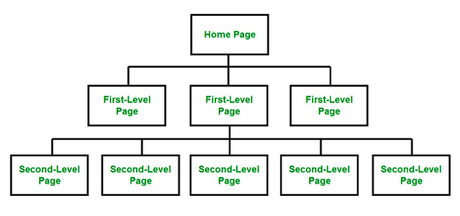 Best practices for SEO success when optimizing websites to rank highly on search engines have changed dramatically over time, as Google continues its ongoing series of algorithm updates (with the other search engines usually following suit shortly thereafter).
Best practices for SEO success when optimizing websites to rank highly on search engines have changed dramatically over time, as Google continues its ongoing series of algorithm updates (with the other search engines usually following suit shortly thereafter).
Once favored tactics like keyword stuffing, white text, and anywhere-and-everywhere link building are as dead as the Pets.com sock puppet.
But while the evolution of SEO practices has been hard on those who focus on manipulating search results in their favor, it’s been good for searchers. Search inquiries now yield (at least most of the time) more relevant and timely results than ever before.
And while search results may not always be ideal—Google has been accused of favoring big brands, and its own web properties, in search results, for example—they are generally better for marketers as well.
Some of the specific tactics used to optimize sites for search remain esoteric, but most of what works today for SEO success falls into three areas: Technical design, content quality, and link earning. Here’s a look at each area in detail.
Technical Design
Technical factors impact both the ability of search engine spiders to accurately “crawl” sites for content as well as the user experience.
The information flow of the site affects both crawl’ability and user experience. Search engines favor hierarchical web design—just as the content within books is often organized into sections, chapters, and topics to make the content easier for the reader to absorb, well-designed websites use a similar structure of working from more general information to more specific subject matter.

Other technical factors affecting search engine rank include:
Page load speed. Faster load times mean better user experience. You can minimize load times by keeping image files small, having clean code (which you can check using tools like the W3C validator), and, for WordPress sites, installing a caching plugin.
Mobile friendliness. Particularly since April of 2015, Google favors mobile-friendly sites in search results, and responsive design as the best approach to designing for both mobile and desktop devices.
Crawl’ability. Hierarchical web design, as noted above, is one way to make your site easy for search engines to crawl. It’s also helpful to include and maintain an XML sitemap; WordPress users can install a plugin like Google XML Sitemaps to automate this process. And it’s good practice to periodically check your site in Google Search Console (formerly Webmaster Tools) for any crawl errors.
Functional links. Broken links are to a website what peeling paint and a weedy front lawn are to a house—they make it look unkempt, even scary, a place to avoid. Search engines hate broken links, and they are bad for user experience as well. Use a broken link checker tool to periodically examine your site and fix any broken links.
Content Quality
“Keyword density” was a critical metric in the old days of SEO. Basically, the more times one could stuff a specific keyword phrase into a page of text, the better it ranked. This led to predictably horrendous prose.
What Google and other search engines value today is “writing for readers” (not for search engines). Yes, it’s still a good idea to repeat a target phrase a few times on a page (in the title, text, and a subheading, for example) but there’s no need to overdo it—search engines are sophisticated enough to interpret context and synonyms.
The key to effective SEO writing today is to think about what questions you are trying to answer with any given piece of content, then answer those questions as thoroughly, accurately, and definitively as possible.
Four other aspects of content quality to keep in mind are:
Keyword research. Use the words and phrases people are likely to use when searching for your content. If you are using Google AdWords, take advantage of Google’s Keyword Planner tool for generating suggestions. Other options include WordStream’s free keyword research tool and Ubersuggest.
Readability. Help readers out by breaking up large blocks of text into sections with separate subheads. Avoiding run-on sentences and excessively long paragraphs also helps keep readers engaged.
Content length. While there is some evidence that longer-form content (2,000 words or more) ranks higher in search, the best length for any web content is “as long as it needs to be.” You’ll likely need at least 300 words or so to get Google’s attention on any topic, but beyond that, write only as many words as you need to provide thorough answers to your readers’ questions.
On-page optimization. As mentioned above, though keyword stuffing is out, there are still several places a target keyword phrase should be used: In the page URL, meta title, on-page title, within the text, and in at least one image alt tag. For WordPress sites, install a plugin like All In One SEO Pack or Yoast SEO to help with this.
Link Earning
“Link building” used to be a key SEO skill, but search engines now value link quality much more highly than link quantity. High-quality links, for the most part, can’t be built—they need to be earned. Here are six keys to earning those coveted earned links:
- Quality content. Though high quality content alone won’t necessarily attract links, desirable links can’t be earned without it.
- Social sharing. While there is some debate as to whether and to what degree social shares directly impact search rank, there’s no doubt it exposes your content to more people in your market—thereby improving the odds others will link to you in their content.
- Influencer relationships. Get to know the influential bloggers and writers in your industry. People are more likely to link to sources they know and trust.
- PR. Links from industry news sites are very valuable. This isn’t just a matter of sprinkling links throughout press releases though; the most impactful links are those earned by doing something newsworthy and getting journalists to actually cover your stories.
- Guest blogging. While guest blogging done in a manipulative way purely to gain links is dead, guest posts (done right) still have SEO value. The keys are to be selective (does this blog expose your content to a new but highly relevant audience?), provide quality content, and limit the number of embedded links.
- Community involvement. Links from industry event sites, non-profits, relevant trade associations, and industry analysts are valuable. Simply being a good corporate citizen involved in your industry and community can provide SEO benefits.
The bottom line is that SEO is no longer about trying to manipulate rankings—search engine algorithms have become too sophisticated for such tactics. Rather, it’s about doing the right things: Creating great content, optimizing the user experience, and engaging with your industry community.
What do you think? Are you tasked with keeping your corporate websites up-to-date and on track when it comes to SEO and digital optimization? Have you tried any of the above and seen success? Or maybe failure? Do you have anything else you could add to my list? I would love to hear your thoughts.
photo credit: Boggle via photopin (license)

